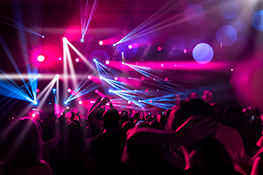Stage Lighting Secrets to Wow Your Audience
Understanding the Fundamentals: Light, Color, and Shadow
Before diving into advanced techniques, mastering the basics is crucial. This section explores the interplay of light, color, and shadow in creating compelling stage visuals. We’ll discuss the different types of stage lighting fixtures – from spotlights and Fresnels to LED pars and moving heads – and how their unique properties contribute to the overall effect. Learn how to choose the right fixture for your needs based on intensity, beam angle, and color temperature. We’ll also delve into the importance of color mixing and the psychology of color in stage design, showing you how to evoke specific emotions and moods through strategic color choices. Finally, learn to harness the power of shadow to create depth, drama, and intrigue on stage. This section provides practical exercises and examples to solidify your understanding.
Beyond Illumination: Shaping the Narrative with Light
This section focuses on the narrative power of lighting design. We’ll move beyond simply illuminating the stage and explore how lighting can be used to tell a story, enhance the emotional impact of a performance, and guide the audience’s eye. Learn techniques like using light to highlight key moments, create transitions between scenes, and build suspense. We’ll discuss the use of light cues to emphasize specific actions, characters, or objects on stage, enhancing the dramatic tension. Discover innovative approaches to using light to create different atmospheres, from intimate and romantic to grand and epic. The key here is understanding how light can communicate with your audience on a subconscious level, strengthening the overall artistic expression.
Mastering the Art of Light and Shadow: Advanced Techniques
This section delves into advanced lighting techniques for seasoned professionals and aspiring designers. We’ll explore complex lighting designs incorporating gobos, special effects, and automated lighting systems. Learn to create stunning visuals using moving lights, effectively manipulating their movement, color, and intensity to achieve dynamic effects. We’ll explore the art of backlighting and side lighting to add dimension and depth to your scenes. We’ll also cover practical tips for working with different stage setups and how to adapt your lighting design to various performance spaces. Finally, this segment will explore the latest trends in stage lighting technology and offer advice on choosing the right equipment for your needs.
Practical Exercises and Real-World Examples
This section provides a series of practical exercises to help you put your newfound knowledge into practice. We’ll offer case studies of successful stage lighting designs, dissecting their techniques and analyzing their impact. You’ll gain valuable insights from successful productions, learning how lighting contributed to the overall narrative and artistic success. This section includes actionable steps, downloadable resources, and templates to help you design your own impactful lighting schemes.
The Future of Stage Lighting: Technology and Innovation
We’ll explore emerging technologies in stage lighting, including LED advancements, automated lighting systems, and the integration of lighting with other stage technologies. We’ll discuss the benefits and challenges of incorporating these new technologies into your productions. This section provides an outlook on future trends, assisting you in staying ahead of the curve and leveraging the latest advancements in stage lighting to create truly breathtaking experiences.
Conclusion: Illuminating Your Vision
Through understanding the fundamentals, mastering advanced techniques, and embracing innovation, you can transform your stage productions and captivate your audience. The power of stage lighting lies in its ability to tell stories, evoke emotions, and create unforgettable experiences. By implementing the strategies discussed in this article, you can illuminate your vision and create truly awe-inspiring stage productions.


 Auditorium Construction Services
Auditorium Construction Services 